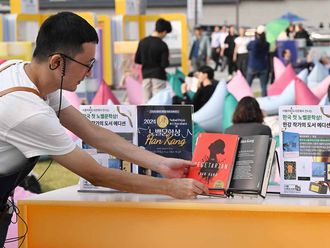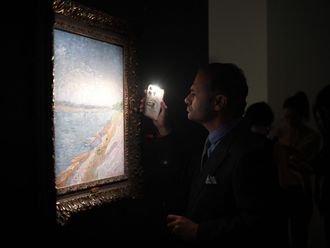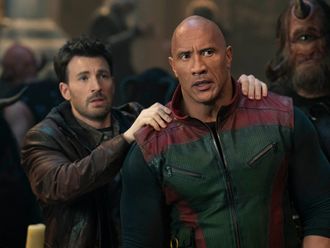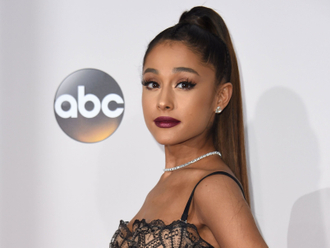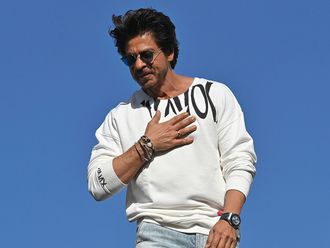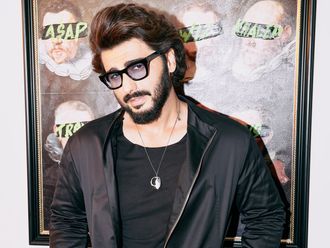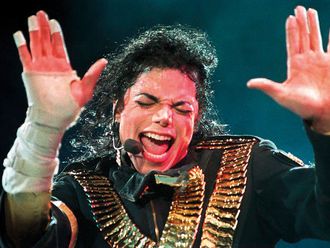When Letizia Battaglia returned to Palermo in 1974 from a three-year sojourn in Milan, the city was enjoying a period of relative calm. There was the endemic corruption, obviously, and the usual posse of self-serving politicians. But no one was expecting a bloodbath, least of all Battaglia. She was a 40-year-old mother of three, enjoying her first steady job as picture editor of a city newspaper. She wasn't looking to cover a war. But war, it seemed, had decided to come looking for her.
Sitting at a low table in her eighth-floor apartment in Palermo, Battaglia, now 76, flicks through some of the iconic images she captured during what Italians call the anni di piombo, the years of (flying) lead. Eighteen years in which the ferocious Corleonesi mafia clan would claim the lives of governors, senior policemen, entire mafia families and, ultimately, two of Battaglia's dearest friends: the anti-mafia judges Giovanni Falcone and Paolo Borsellino.
This May marks the 20th anniversary of Falcone's assassination by a massive motorway bomb, which also killed the husband of Rosaria Schifani, one of Falcone's bodyguards. In the intervening years the big drug-trafficking wars have shifted, on a blood meridian, from Sicily to the Mexican border. But Battaglia's photographs testify that nothing has changed, that none of this is new. The techniques pioneered by the Corleonesi have proved their efficacy. Maximum violence. Total extermination of your rivals. Intimidation of the state.
If horror still lurches reliably out of Battaglia's pictures, so do the more complicated emotions of pity and despair. To many, these are the qualities that elevate them to the status of art. Battaglia's reputation has steadily risen over the years, attracting awards and exhibition space as far afield as New York and Amsterdam. But long before the foreign prizes and plaudits arrived, she had already received domestic recognition of a more heartfelt kind: death threats.
That Battaglia ignored the threats, despite being advised to lie low by Falcone himself, comes as no surprise once you have met her. At first she puts you at ease with her husky laugh and friendly little dog, Pippo. Her apartment is dark and cool, the walls adorned with two of her more soothing photographic portraits: a girl and a dove. Further along is a framed Red Flag (it is from India, sent by a daughter), which seems in keeping with Battaglia's bohemian dress and 1960s fringe. Beyond the bookshelves is a balcony, its tiles and pot plants shining in the summer sun. Framed by the door, the view could almost be a photo, a sanitised vision of the sunny present.
But once her eyes have fixed on you, her intensity is revealed. Let your gaze drift down to your notebook when she is declaiming something and you are reprimanded. "Look me in the eyes!" She is deadly serious. She insists on being heard. She smokes a lot.
During the height of the violence, Battaglia would get called out at all hours of the day and night, and be on the scene of a murder, pushing through ghoulish crowds of onlookers, before the blood of the dead had begun to dry. It was unrelenting: they would find as many as seven bodies at a time. No sooner had she and her colleagues raced across town on mopeds to cover one killing, than they would receive news of another hit. "Before you'd even dealt with the desperation and suffering of one murder, you were already on the way to another. More blood, more violence."
But she didn't stop. This was never just a job. It was her duty as a citizen, she believed. And it showed. These urgent, often grainy shots were politics of the most incendiary kind. They were asking a question that no one at the time wanted, or dared, to hear: why?
"The worst thing was that we didn't understand at first where this inferno came from," she says. "No one knew about the Corleonesi. No one was getting caught for these crimes. And they always killed the best people. The best judges, the best policemen, the best politicians. It took years to understand what was going on, thanks to the work of Falcone and the testimony of the pentito Tommaso Buscetta."
Battaglia's inability to shield herself from the horrors she witnessed is still evident. At one point she shudders and asks me to put away a photo taken by her then boyfriend and fellow photographer, Franco Zecchin. The photo in question has an almost surreal quality to it — three bored-looking young men slouch in the back of a bus, looking for all the world as if they haven't realised they are dead yet.
However, Battaglia didn't only photograph corpses. She ranged across Sicily, taking in religious festivals, psychiatric hospitals, crumbling slums and aristocratic salons. The stars of her photos are often young women, quietly enduring their various predicaments. The compassion that shines out of these portraits dispels any doubts one might entertain while wading through the bloodier end of her catalogue. Her art is not exploitative — it is about exploitation.
Though Battaglia describes her own childhood as serene, it was also suffocatingly cloistered. Palermo after the war was not a place for independent-minded girls and her father was possessive. He kept her locked up in the family home. "I couldn't go out because men would bother me on the street, even at 11 years of age," she says. Life with her jealous father soon became intolerable and at the first opportunity she bolted, which in those days meant marriage — at the age of 16, to a prosperous older man who worked in the coffee business.
Three children followed, but little happiness. Twenty-one years would pass before Battaglia finally mustered the courage to walk out. In a country where divorce was still illegal and feminism just a distant rumour, she installed herself and her daughters in the single room of an "alternative" household in Milan. She was penniless but free. Her family considered her ruined.
In Milan she learned her craft as a photo-reporter and soon, despite her family's forebodings, she was enjoying success and all the other things she had previously lacked in life: creativity, independence, intellectual friends. Among these was the Sicilian author Leonardo Sciascia. It was he who later wrote a catty article that labelled Borsellino as a "professional of the anti-mafia". The article was seized upon by the judge's enemies and used to isolate him. Five years later both he and Falcone were blown up by two separate bombs, one after the other. The judges knew it was coming. As Falcone said: "It is my destiny to take a bullet from the mafia one day. The only thing I don't know is when."
"Sciascia was an adorable person, but he had an outdated idea of the mafia," Battaglia says. "He made a mistake with that article, but I forgave him." As for Falcone and Borsellino, she has only praise. "I have two photographs of each of us together, taken by my daughter. They are the most important photographs of my life. I was proud to know them. These two brave Sicilians died to defend us."
But perhaps the most important friendship she made was with the maverick anti-mafia mayor of Palermo, Leoluca Orlando, with whom she served both on the city council and as a deputy in the regional parliament. "Those were the most beautiful years of my life. Better than being in love, or having children," she says.
A price must be paid for this kind of political commitment. It was difficult for her daughters; it was difficult for her, too. When she bought an apartment in one of the roughest parts of town, intending to share the people's problems, she was repeatedly burgled under the eyes of her neighbours who, true to form, never saw a thing. A cynic might suggest this was a classic case of a communist intellectual showing solidarity with the masses, and the masses failing to reciprocate.
But at least the thieves didn't steal her negatives. Battaglia's immense archive would provide sensational evidence when the former Italian prime minister Giulio Andreotti found himself in court answering charges of links to the mafia. Battaglia, years before, had taken a photo of him during a visit to Sicily which unwittingly showed him in the company of a mafioso. Despite this, the prosecution never succeeded in securing a conviction.
It was a defeat for the anti-mafia movement, one of many. But despite the difficulties of winning cases such as these, Battaglia believes that the answer to defeating Cosa Nostra is deceptively simple. "The mafia can be beaten, but only if people stop voting for dishonest politicians. It's no longer just a Sicilian problem. It's all over Italy."
Battaglia no longer does reportage — "I'm too old to keep walking the streets" — but she regularly visits schools and attends anti-mafia events, however lost the cause may seem sometimes. Is this what people mean when they describe her as impegnata, involved?
"It means setting an example," she says. "It means opposing the mafia in everything that I say and buy and eat. Every person that I meet, every gesture that I make, it's all connected to the need to liberate my country from the mafia. In a city like Palermo, where the vast majority of shops and businesses pay extortion money, that's not as easy as it sounds.
In fact, Battaglia doesn't go out much any more, except in the morning to walk the dog. She avoids contact with the city's middle classes, deemed guilty of what she calls moral absenteeism. She admits: "Palermo is a bit of a prison for me — it holds me down. Every now and then I need to get away. I even moved to Paris for a year and a half, but I couldn't help thinking about Palermo — despite all of its problems ... its corruption, which is even worse now than it was before."
These symptoms of embittered love will be familiar to anyone who has lived in Sicily for an extended period of time. The place is infuriating, self-destructive and very nearly hopeless, but you can't shake it off. As Battaglia's friend Sciascia once said: "I hate and detest Sicily insofar as I love it, and insofar as it does not respond to the kind of love I would like to have for it."



